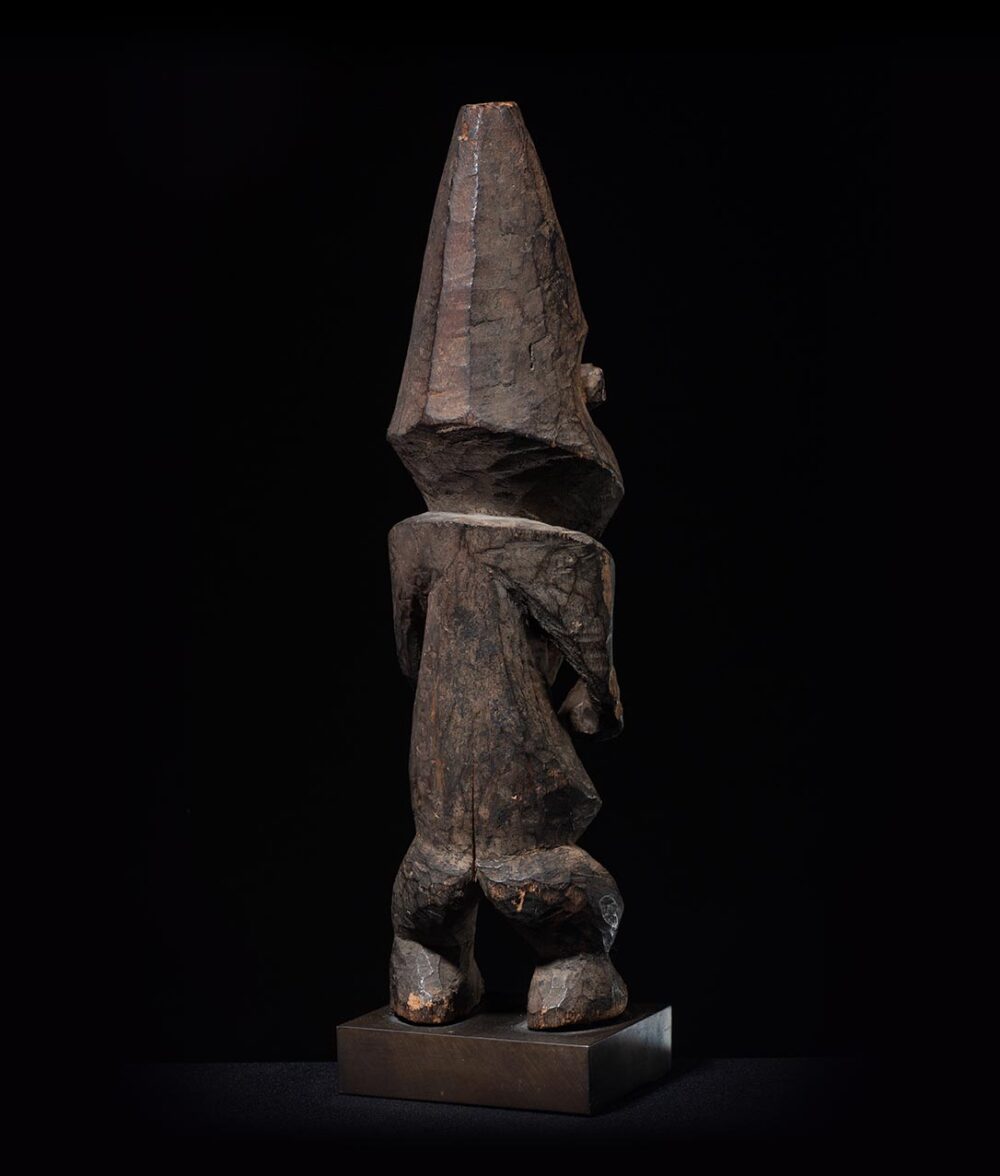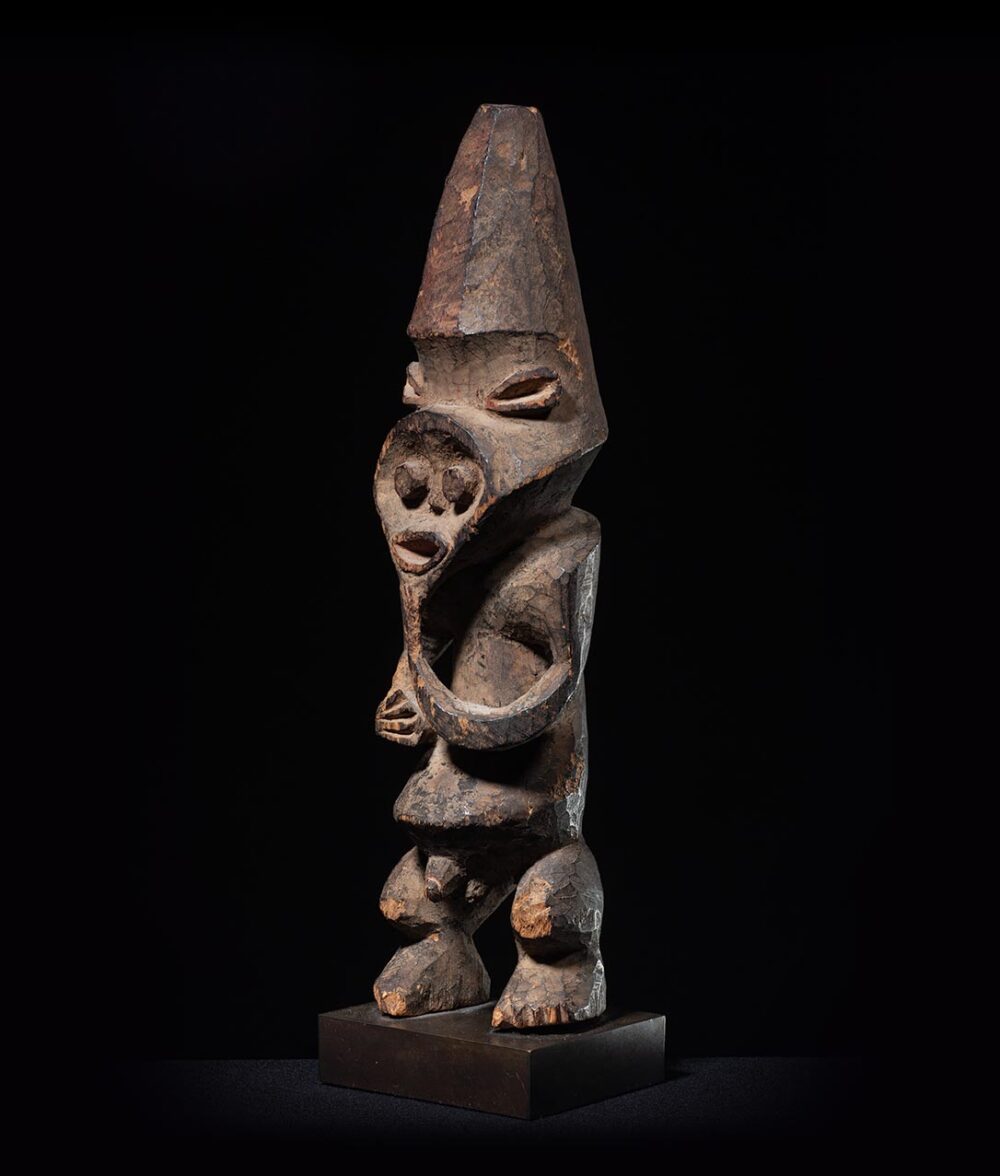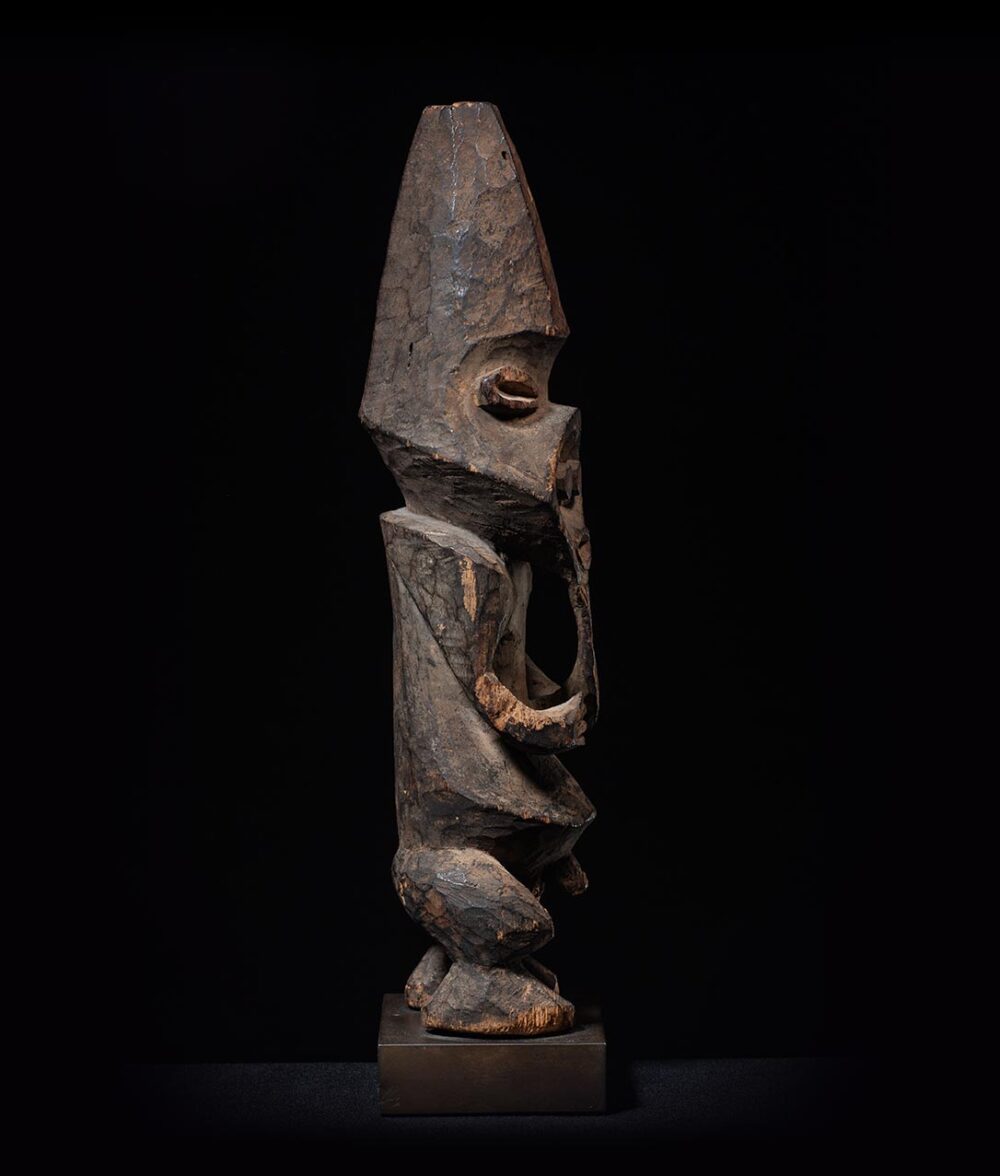Male Figure, Tadep
Mambila people, North Cameroon
Early 20th c
Provenance: Private NYC collection, acquired in 1987 from Alfie Shineberg.
Tadep are often placed in shrines outside the village—at the threshold between civilization and the wilderness. These figures characteristically show either the left hand or both hands raised to the chin in a thoughtful gesture linked to Suaga, the Mambila society of healers who also deal with justice, protection from evil forces, and ritual cleansing.
Tribal art often reflects the cultural beliefs and practices of a specific community. The concept of transformation in tribal art is a manifestation of the belief that objects or beings can change or shift form to reveal different aspects of themselves. In the case of this Tadep figure, the presence of two distinct faces that can be perceived when viewed frontally and from profile is an example of transformation in tribal art.
In the culture of the Mambila people, the figure represents the duality of life, as both faces symbolize different aspects of reality. The frontal face represents the visible and tangible aspects of life, while the profile face represents the hidden and intangible aspects of life. This manifestation of transformation in this Tadep figure reflects the Mambila belief that there is more to life than what meets the eye, and that the spiritual realm is just as important as the physical realm.
Male Figure, Tadep
Mambila people, North Cameroon
Early 20th c
Provenance: Private NYC collection, acquired in 1987 from Alfie Shineberg.
Tadep are often placed in shrines outside the village—at the threshold between civilization and the wilderness. These figures characteristically show either the left hand or both hands raised to the chin in a thoughtful gesture linked to Suaga, the Mambila society of healers who also deal with justice, protection from evil forces, and ritual cleansing.
Tribal art often reflects the cultural beliefs and practices of a specific community. The concept of transformation in tribal art is a manifestation of the belief that objects or beings can change or shift form to reveal different aspects of themselves. In the case of this Tadep figure, the presence of two distinct faces that can be perceived when viewed frontally and from profile is an example of transformation in tribal art.
In the culture of the Mambila people, the figure represents the duality of life, as both faces symbolize different aspects of reality. The frontal face represents the visible and tangible aspects of life, while the profile face represents the hidden and intangible aspects of life. This manifestation of transformation in this Tadep figure reflects the Mambila belief that there is more to life than what meets the eye, and that the spiritual realm is just as important as the physical realm.









